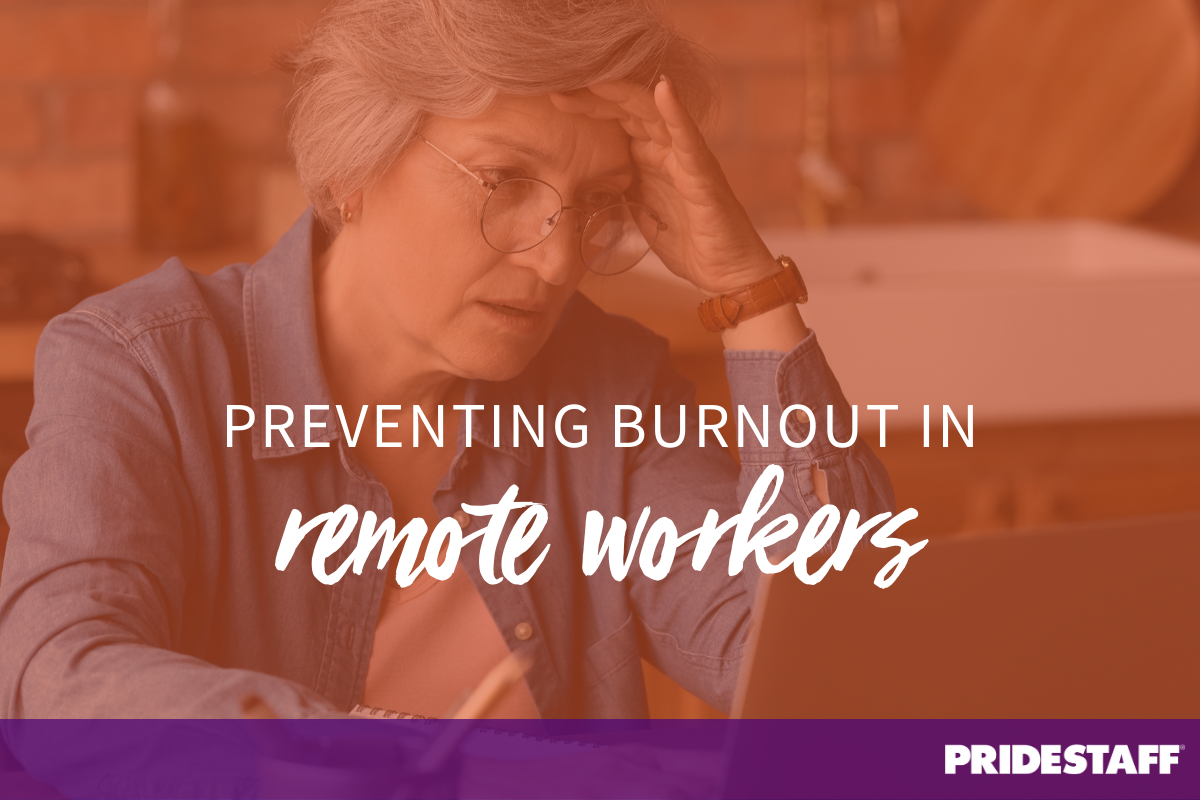Preventing Burnout in Remote Workers

According to our recent employee survey, 84% of workers would prefer to work either full time or some of the time remotely. But just because people like working from home, that doesn’t mean it’s all sunshine and rainbows. Remote employees are expected to complete the same volume of work as on-site employees are. But working from home brings its own challenges – which can lead to burnout. Here’s what to look for and what you can do.
Make Sure They Have the Right Equipment
You may have checked that employees have a computer and internet access, but did you confirm the quality? An outdated system can increase frustration and add to the length of their day. If an employee can make a cup of coffee in the time it takes to download a file, they need to do their work. Ask for specs on what they are working with. Give them tips to optimize, provide them with equipment that meets company standards, or offer a stipend to be used for upgrading their equipment.
Encourage Some Structure
For many remote workers, the ability to work when it’s most convenient is one of the biggest advantages of this option. The danger is when work leaks into personal life too much. If they are expected to work an 8-hour day, they should plan an 8-hour day. If your company has specific hours to work that’s fine, but if employees can establish their own hours, they should set up parameters. Whether they choose to work from seven to three or ten to six, they should shut down and shift into home mode. That could mean shutting the office door or shutting their laptop. One effective end-of-day practice is to take a few moments to write down what you accomplished that day and your to-do list for the next day. Whenever possible, it’s helpful to get work-related items out of sight when the workday is done. Some employees enjoy a quick walk or other activity to mark the end of the day.
Maintain Open Channels of Communication
When employees were asked what made remote work successful, many of them cited communication with their managers. While they also said they don’t like being micromanaged, they did enjoy regular one-on-ones where they could bring up difficulties, ask for advice or receive feedback. It’s a great way to keep your team on track and observe how they are doing professionally and emotionally. A lot of bonding on-site takes place in informal conversations, whether the discussion is “that chart looks great,” “congratulations on your new dog” or “how about that local sports team?” When you schedule regular meetings to check-in, it becomes an ongoing conversation, not an event that makes the employee nervous.
Remind Employees To Take Time Off
With the flexibility of working from home, it’s easy for employees to forget about taking PTO. Employees with a mild illness might power through it while working at home when they would have taken a sick day to prevent getting their co-workers from getting sick. It might seem great at first that they don’t need to miss a day of work, but without rest, the employee may underperform for days rather than being off for one. With the pandemic, a lot of vacation time went unused because most people could not travel. They can still use a break, however, to refresh themselves and improve performance. Gentle reminders can encourage employees to take a few three-day weekends to enjoy family time or a week to work on projects around the house.
PrideStaff is here to help.
Burnout can be a serious problem for your team, but putting the right systems in place and making sure you have the right people in place can make all the difference. Our national staffing firm can help ensure you always have the talent you need to keep your business staffed, flexible, and prepared for what’s next. How can we help? Contact your local PrideStaff office today to start a conversation.




